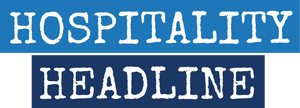When it comes to demographics, the adage "change is constant" rings especially true. Societal age groups experience predictable shifts in their needs and purchasing behaviors. Understanding these generational trends—where time, money, and health interconnect—offers a powerful strategy for positioning your business in the marketplace.
The Time and Money Equation
We all know the time-money trade-off: You can either spend time to complete a task or pay someone else to do it. Time and money, in this context, are interchangeable resources. This concept becomes even more intriguing when applied across the human lifespan. As we age, priorities naturally shift, altering what we value most at different life stages.
In early adulthood, most people have ample time but limited income. The focus, then, is on building wealth—growing careers, accumulating savings, or investing in education. Businesses targeting this demographic should understand that the majority of spending is often value-driven, where "bang for the buck" takes precedence over convenience. Young adults are generally willing to invest their own time if it means saving money.
Midlife Priorities: Trading Money for Time
As people move into their 30s and 40s, the equation flips. Careers become established, incomes grow, and many enter a stage of life where time becomes a precious commodity. With marriages, families, homeownership, and children’s activities taking precedence, these individuals often prioritize purchases that buy back their time. From meal delivery services to household cleaning, time-saving solutions become highly desirable. For businesses, offering convenience-driven products or services that minimize time investment is key to capturing this demographic’s attention.
Later Life Shifts: Time and Money in Harmony, Until…
Eventually, many people reach a stage where both time and money become more abundant. Adult children leave home, careers might slow down, and financial stability is more attainable. For individuals in this life phase, there is finally a balance of resources. Leisure, travel, and hobbies that were once sidelined become top priorities. Businesses that provide experiences, high-quality products, and enriching activities have significant appeal to this group, as they are ready to spend on what brings them fulfillment and joy.
Health as the Final Equation
But there’s another, often overlooked element in this equation—health. No matter the amount of time or money one has, without good health, options dwindle. This reality often hits around the age of 40 to 50, when people start to experience the effects of aging and make health a central focus. In recent years, health statistics for Americans have declined, spotlighting an increased focus on wellness and longevity.
As health concerns become more pronounced, many individuals begin to allocate their resources toward better living standards—whether through fitness memberships, organic food choices, or preventative healthcare services. This shift underlines a crucial insight for businesses: Consumers are willing to invest in health, especially if it enhances their ability to enjoy their time and spend their money meaningfully.
Embracing the Generational Equation
Recognizing these shifts isn’t just about acknowledging a pattern; it’s about actively responding to it. When you tailor your business offerings to reflect where customers are in this life equation, you meet them where they are with what they need most. As generations move through the stages of prioritizing money, time, and health, the companies that adapt to these changing values will be the ones that thrive.
In short, demographics shape economies by driving predictable shifts in priorities. Embrace these generational changes, align your offerings to meet evolving needs, and you’ll unlock the potential for lasting customer loyalty and success.

